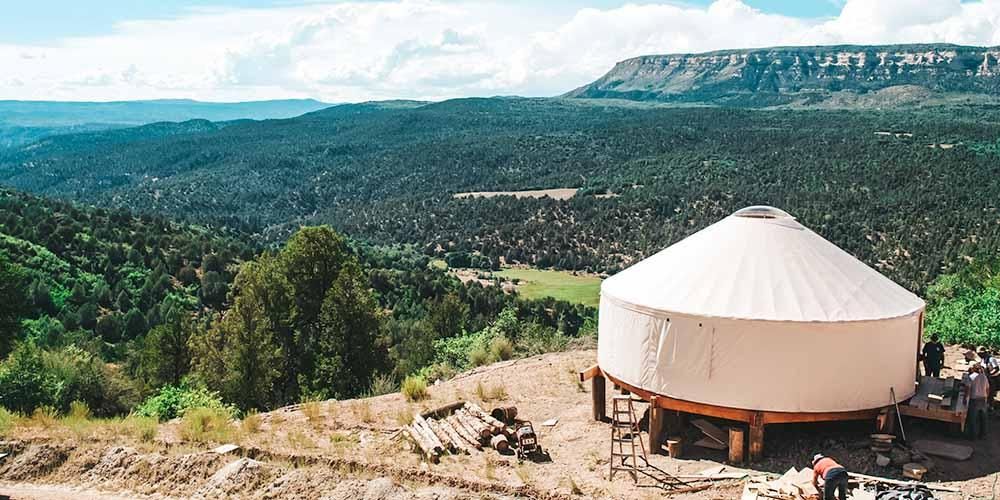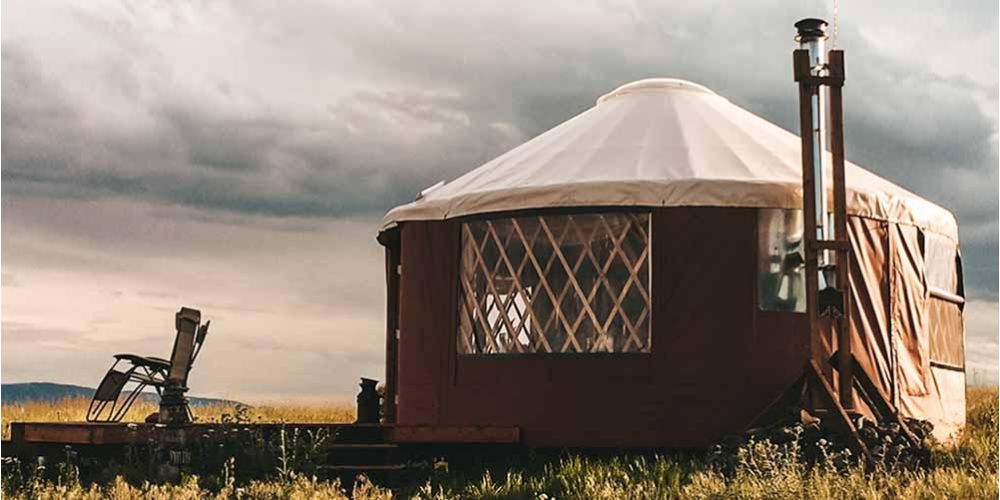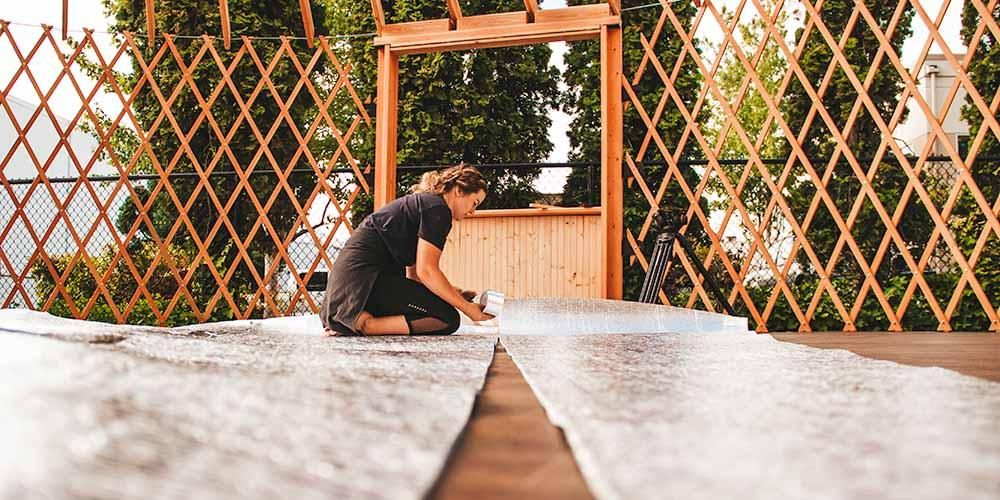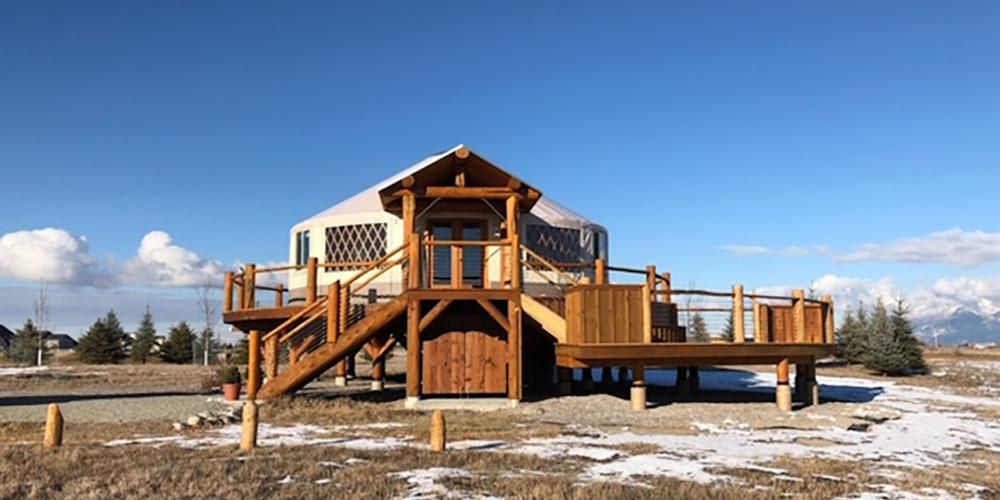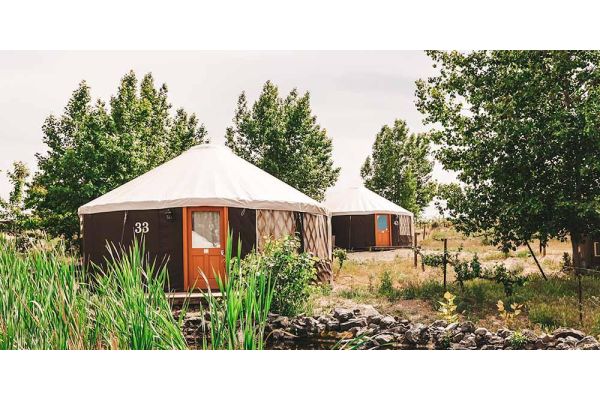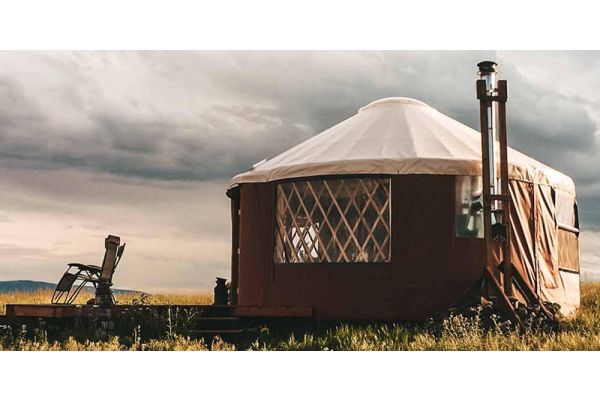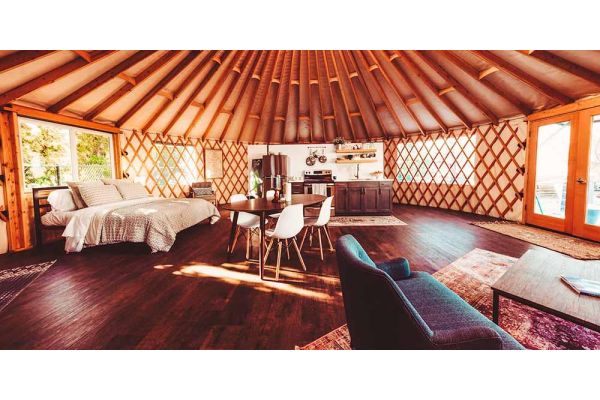If you plan to raise your yurt in a location where summer climates reach high temperatures, you will want to consider the best tactics to stay cool while the temperature rises. It’s a common misconception that yurts are only beneficial in cold climates. Accordingly, yurts provide great homes for both warm and cold climates. However, one should consider the layout and design of their yurt to determine the best setup for their geographical location. Unless you are fortunate enough to raise your yurt under the canopy of tall trees or have a large tree on your southwest elevation, you’ll need to design your yurt to perform better in direct sunlight.
How to Cool an Air Conditioned Yurt Efficiently
- Choose a lighter roof color
- Pick a thick roof weight
- Select a lighter color on the sidewall (i.e. Eggshell on the Eagle and Almond on the Raven)
- Reduce UV exposure by choosing a tinted dome
- Let the warm air out with an opening and adjustable dome
- Reduce the sun’s rays with a screen for the dome
- Choose opening windows
- Position windows for cross-ventilation
- Add an awning over the door if the door has glass in it
- Position your door towards the north – if possible
- Use an AC unit, such as the Mitsubishi Mini-Split (research the correct BTUs for the size yurt you have)
Install a ceiling fan – remember to include a ceiling fan bracket in your Rainier yurt order
A combination of these upgrades will help to keep you cool.
Best Ways to Keep Your Yurt Cool with AC
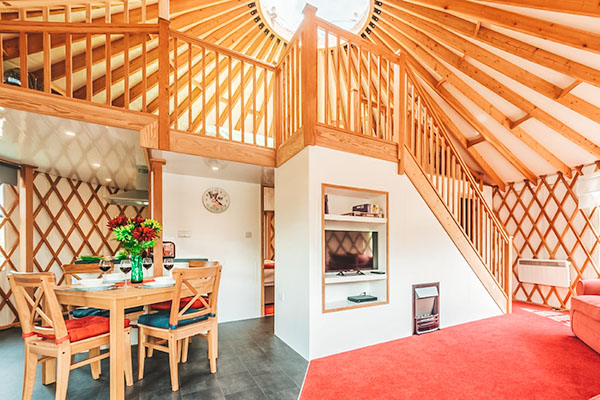

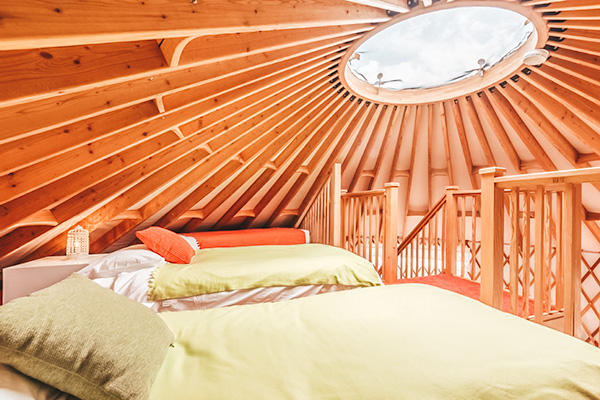

Yurt Insulation for Maximizing Air Conditioning Efficiency
The first step to eliminating unwanted heat is to ensure that your yurt is well-insulated. Our team of yurt experts suggests that yurt dwellers add a second layer of insulation to their roofs. Insulation will help you keep warm in the winter and stay cool in the summer months. Rainier Outdoor manufactures R-Value and E-Value insulation. According to current standards, E-value insulation is highly recommended for yurt dwellers raising their yurt in cold climates. R-value insulation is considered for yurts in warmer climates because most of the heat evaporates through emission or Radiant Heat Transfer. Emission directly transfers heat from a radiant source, like a pellet stove or an element heater. Because typical standard insulation is not highly reflective, it tends to have a low E-Value, making it a poor insulator compared to double-sided foil. If you’re interested in learning more, check out our ‘Facts on Yurt Insulation’ blog.
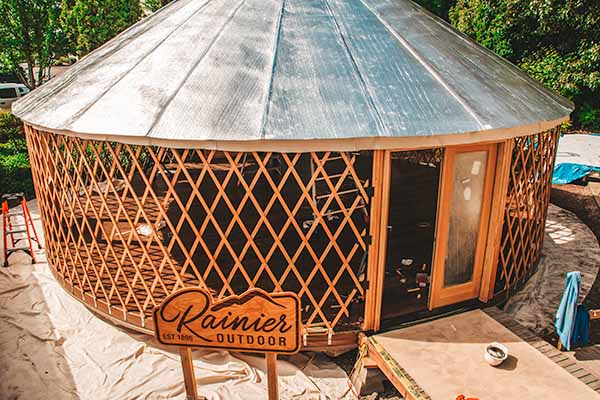

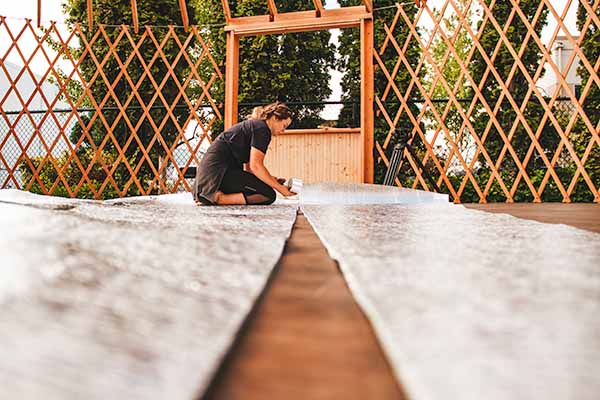

Consider Yurt Windows, Doors, and Awnings to Keep Cool
Historically, yurts are designed using tension and compression to create a stable and sturdy, circular structure. The circular nature of a yurt makes it versatile to include windows, vents, doors, and window awnings that provide ventilation and help minimize heat. All of these will provide shade to your yurt opening and reduce the amount of heat and radiation gain that enters the yurt.
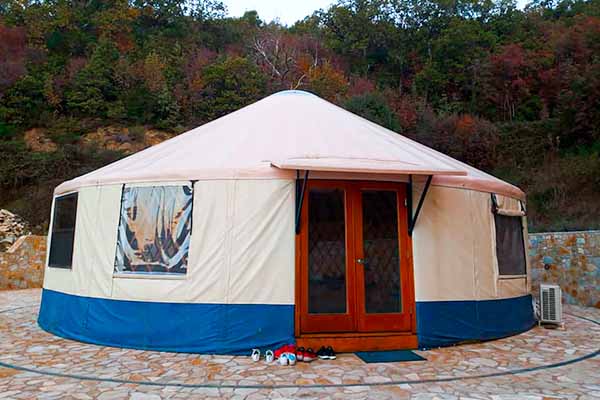



Pay Attention to Yurt Walls
Our yurt manufacturers build the walls with our standard 18oz. patio 500 fabric panels. These fabric panels are a breathable material, used to help diminish heat. If you’re interested in learning more about our unique yurt anatomy, follow this link.
What About AC?
There are many options when it comes to installing air conditioning in your yurt. If you’re raising your yurt in a location where humidity is not common, then we recommend swamp coolers. Swamp coolers blow air through wet materials and add moisture to the air. This is not an ideal option for folks living in a humid climate, but it works well in dry climates. Another option to consider is a free-standing AC unit or a window air conditioner. Our yurt experts recommend the Mitsubishi Mini-Split.
Did You Know You Can Install Ceiling Fans?
Traditionally, ceiling fans are a useful and cost-effective way to cool a house and the same applies to yurts. Ceiling fans help circulate air within your space and create a comfortable draft throughout the yurt with cool air in the summer and warmer air in the winter.
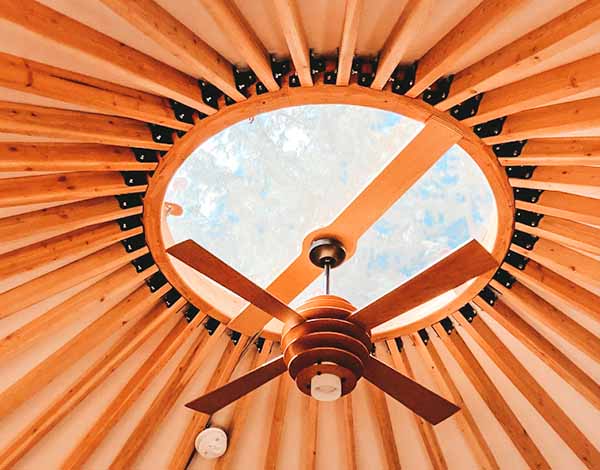

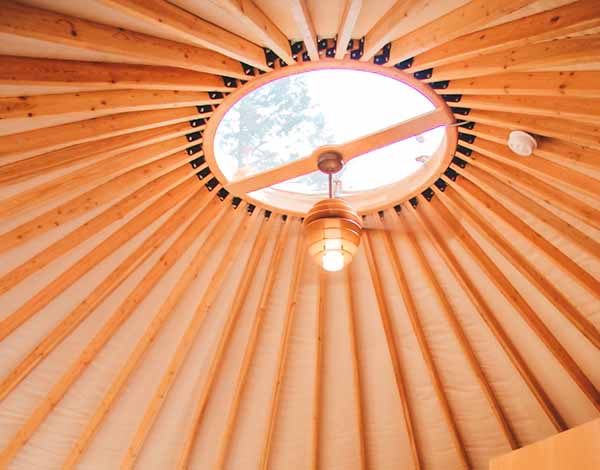

This guide is derived from recent yurt dwellers and their experiences. Please feel free to drop a comment below if you have any questions. If you need help deciding on products to keep your yurt cooler in the warm weather – give us a call. We would be happy to walk through it with you.
Enjoy the journey!

